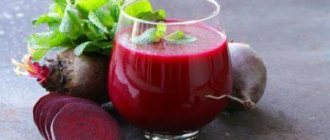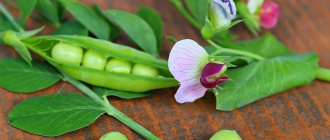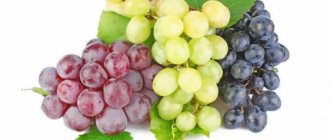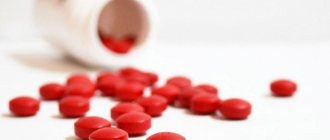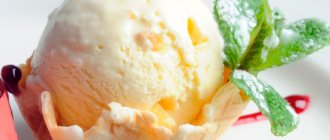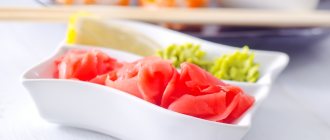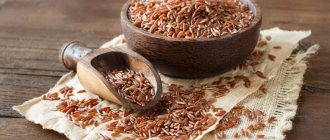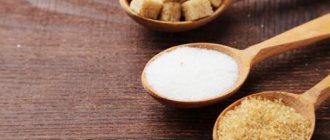There are incredibly many healthy drinks that promote health, rejuvenation, maintaining beauty and slimness. This category includes matcha tea, which is valued for its unique taste and a lot of useful qualities. I haven’t heard anything about matcha tea for a long time, although I love all kinds of teas, vitamin cocktails, and drinks. Although there is nothing surprising, because there are so many different ones in the world. Maybe because Chinese teas or even the same African rooibos tea are more common, and matcha is a Japanese miracle for the tea ceremony.
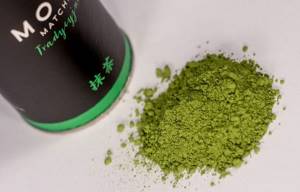
Matcha
Matcha green tea: what is it?
Despite its “Chinese roots,” this drink is the calling card of the Land of the Rising Sun. It is elite; there are not as many plantations where it is grown as the Japanese would like. It turns out that not every soil is suitable for matcha: sandy soil will give a good green color, but will not provide taste; on “red” soils, the tea raw material will be very aromatic, but its color is not the standard.
Only plantations located in the areas of Uji (Kyoto Prefecture), Nishio (Aichi), Shizuoka, and on the island of Kyushu meet all the necessary requirements. The leader in production volumes is Shizuoka, where more than 40 percent of unusual tea is grown.
Scientists who studied the beneficial properties of the drink made an unexpected conclusion: in the area where the plantations are located, very healthy people live - diseases are practically unknown to them, and the average life expectancy is almost 90 years.
It is no coincidence that interest in tea raw materials, which have amazing capabilities, began to go beyond the industry: matcha is used in pharmacology, cosmetology, and the food industry (for making noodles, desserts, ice cream, smoothies).
Green tea indirectly curbs food cravings
Another important topic is the problem that many people have with extreme food cravings. If the metabolism or absorption of nutrients in the stomach and intestines is impaired, a lack of important nutrients may occur despite adequate or significant food intake. This can lead to increased appetite and even severe hunger pangs. Various types of green tea lead to increased and perhaps even restoration of the metabolism of several main organs: the liver, spleen and pancreas, as well as the mucous membrane of the stomach and intestines. The Sencha tea variety is especially useful because it reduces hunger pangs and food cravings. In cases of strong cravings and bad mood, it is recommended to supplement the diet with South African Hoodia tea, which suppresses appetite quite strongly.
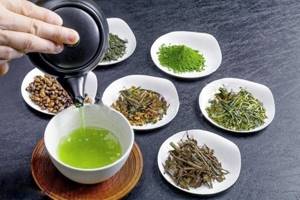
Historical reference
Enterprising Chinese came up with an unusual technology for tea production. At the beginning of the 7th century. here they began to process tea leaves with steam and then press them into briquettes - convenient for storage and transportation. The traditions of the tea ceremony began to take shape.
Therefore, in 1191 (history has preserved the exact date!) Japan received from its neighbor not only the powdered tea leaves itself, but also a practically worked out ritual of tea drinking, which was forgotten in China after some time, but cherished in the Land of the Rising Sun. This is the merit of the Buddhist monks, who gave the tea ceremony a sacred meaning and considered every smallest detail important. We wrote more about the tea ceremony in Japan here.
On Japanese soil, a tradition was born of adding linden flower petals, lemon and ginger to tea. For the tea leaves themselves, the technology for their processing was clearly defined - all the stems were cut off, the veins were removed, and the remaining parts were turned into powder.
Today, to become a participant in an unusual tea party, you don’t have to go to Japan at all (although special tourist tea routes there are well thought out) - the drink has become popular all over the world, and Russians are quite familiar with it.
Color matters
You need to be able to choose the right tea. This is important because not all matcha is created equal. The quality of the leaves is the main thing on which the taste of the powder depends. If the powder is very light, not fine, but grainy to the touch or even slightly yellowish in color, put it aside, this tea is clearly of low quality. We brought two different packages to the shoot, and the barista rejected one of them.
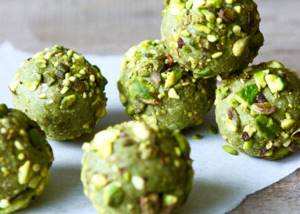
Collection and production
Tea leaves are collected once a year. Two weeks before this, the plantings are covered with mesh material to protect them from direct sunlight and slow down the process of photosynthesis. If this is not done, the main feature of matcha tea – its rich green color – will not exist.
The procedure has other advantages: the plant accumulates amino acids that are beneficial to the human body , the taste of the tea becomes sweet, oily and, as tasters note, “oceanic” and “silky.”
For an elite, high-quality product, only young leaves are collected (they are located at the very top of the tea bushes), then steamed and dried. They do this outdoors or indoors, but be sure to hide it from the sun’s rays. In addition, the technology involves limiting the leaves' exposure to oxygen , since the oxidation process can negatively affect the color of the product, which means that drying cannot last indefinitely.
After this, by hand, just as it was done many centuries ago, the veins and stems are removed from the leaves, and the plates themselves are crushed into a fine powder, like powder. This is a very painstaking operation: to get 30 g of the finished product, a worker must spend about an hour. Large manufacturers are forced to abandon inefficient manual labor; at their enterprises they use special mills, but their millstones, like in the old days, are made of granite.
Composition and benefits of Japanese matcha tea
The beneficial properties of matcha are due to its composition. It contains:
- fiber - to normalize the functioning of the digestive system;
- potassium – improves metabolic processes;
- calcium – to strengthen bone tissue, including teeth;
- iron – improves blood composition.
Matcha is rich in vitamins B, C, A, P, E. It contains much more beta-carotene than such healthy vegetables as spinach and carrots. If we compare Japanese tea with ordinary green tea, then it is the winner in this debate: for example, it contains 137 times more antioxidants.
Its calorie content is only 1 kcal per 100 grams.
Matcha is valued among doctors due to the fact that it:
- strengthens the immune system;
- is a natural antibiotic;
- reduces the level of “bad” cholesterol, stimulating the production of “good”;
- helps the brain during intense mental activity;
- enhances the ability to concentrate;
- gives a person a feeling of vigor (despite the fact that there is practically no caffeine in the drink);
- relieves nervous tension, helps overcome stress;
- has antioxidant properties;
- protects the skin from the negative effects of ultraviolet rays;
- cleanses of toxins and harmful substances, protecting the kidneys and liver;
- promotes fat burning, therefore recommended for weight loss;
- reduces blood pressure;
- relieves hangover syndrome.
Does coffee dilate blood vessels or constrict them? Read about the effects of this drink in our article.
Do you know which contains more caffeine: tea or coffee? You will find the answer at the link.
Types and varieties
The harvest of leaves from the same bushes can produce different types of tea, depending on how the raw materials are processed. If the leaves are first rolled and then dried, the tea will be called "gyokuro" (meaning "pearl dew"). If the leaves are not rolled, but dried in a straightened state, the resulting tea is called “tencha” (or “tencha”) - the basis for the production of matcha.
Well, matcha varieties are called by the name of the plantations where the tea was grown: “samidori” (yellow color, wonderful aroma), “kamakage” (bright green, but less aromatic), “asahi”.
It is quite difficult to buy tea of any specific variety - a mixture of varieties collected from different plantations is usually sold.
Matcha latte recipe
Since matcha is made from whole leaves, it is much stronger than regular green tea, so a teaspoon of powder is enough to make an invigorating drink.
All you need is boiling water, matcha, any milk of your choice and ice. And our video instructions. Choose natural sweetener - stevia, agave or Jerusalem artichoke syrups - this will enhance the beneficial properties of tea.
There are only a couple of tricks in preparing matcha, which the editor’s favorite barista revealed to us during filming.
— First, add the powder to boiling water, and not vice versa. Then there will be no lumps.
— If you add matcha to milk, the drink will taste sweeter than when you prepare it in the reverse order.
Well, don't forget about the ice. First of all, it's beautiful. And, secondly, it is wonderfully refreshing.
How to brew matcha tea correctly
To prepare classic matcha, you will need:
- dzyavan – wide porcelain cup;
- measuring cup - so as not to make a mistake with the volumes of liquid used;
- chasaku - a bamboo spoon that holds 1 g of powder (a teaspoon is twice as large);
- chasen – whisk for whisking tea;
- strainer - to rid the drink of possible lumps.
There are rules, violation of which will not allow you to prepare quality matcha:
- the water temperature should not be higher than 80 degrees;
- The tea powder must be passed through a sieve (it should be made of stainless steel), as matcha sometimes contains lumps.
Matcha is brewed in two ways: koicha (strong tea) and usucha (weak).
Usutya
The “light” version of matcha is also called “democratic” because it can be prepared quickly and drunk every day. Its composition is 2 g of tea powder and 80 ml of water.
The consistency is not very thick, so it is not necessary to whip the drink , although adherents of traditions even in this case arm themselves with a chasen to get an appetizing foam. The taste of the drink is bitter, and its color is slightly lighter than classic matcha.
Koitya
This tea is not only strong (4 g of tea leaves per 50 ml of water), it is also thick, reminiscent of liquid honey in consistency. Ideal for a tea ceremony, as it requires thorough mixing and careful whisking. If the preparation of koit is not done in front of the “amazed public”, but in the kitchen, then you can use a blender or mixer instead of a whisk. The smell of this tea is sweetish-tart, the taste is distinguished by an exquisite bitterness.
Connoisseurs try to prepare koitya from the best varieties of tea, which are obtained from the oldest plantations, where the plants are more than 30 years old.
You won't drink much
Despite the impressive list of beneficial substances contained in matcha, it is dangerous to overdo this drink.
“You need to understand that this tea contains lead in large quantities, so you should not abuse it,” our expert warns. — From the point of view of those people who want to lose weight, tea should be carefully integrated into the diet, since it very actively accelerates all metabolic processes. There is no point in replacing matcha coffee, because these are completely different drinks: they have different effects on the body. In general, matcha affects each body differently, so drink tea in moderate doses so as not to cause an acute reaction.
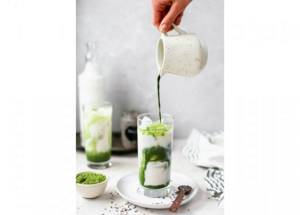
But who is interested in the nuances when a delicious drink also promises miracles of healing and weight loss? It is not surprising that matcha has broken all records in terms of popularity. Green powder began to be added to baked goods, ice cream, and cocktails. But the most popular tea-based breakfast, according to one rating, is the matcha iced latte. .
This drink will be made for you in almost any cafe. But it’s cheaper to cook it in your kitchen, especially since the recipe is very simple.
How to drink
Drinking matcha is especially pleasant as part of a tea ceremony, when both special utensils and the sacred act of whisking tea with a bamboo whisk put a person in a special mood. However, even if this is an ordinary tea party with friends, you should drink matcha slowly, in small sips, holding each one in your mouth for a few seconds first and enjoying the amazing taste.
Beginners often wonder whether they need to add honey, sugar or lemon to this tea. According to experts, there is no need to rush with supplements. First you need to discover all the nuances of matcha, and after some time you can experiment.
How to Store Matcha Tea
Here are the steps you can follow to preserve matcha and prevent it from oxidizing:
- Wash the sealed container with soapy water to prevent contamination.
- Let it dry in the sun.
- Scoop out the matcha tea powder and transfer it to an airtight container.
- Store it in a cool, dark cupboard in the refrigerator.
- If you haven't opened your matcha tea bag yet, store it in the refrigerator.
Before you finish, go through these weight loss tips that will help you for life.
Cooking recipes
Matcha latte is a delicate emerald-colored drink with lush foam. For one serving you will need:
- tea powder – 1 spoon;
- milk – from 150 to 200 ml;
- water – 70 ml;
- sugar or honey to taste.
Pour hot (but not boiling) water into the powder - little by little, carefully, while whisking the contents of the cup - this way you can get a homogeneous, lump-free mass. The milk is boiled and then whipped (it is better to do this using a blender) to form foam.
Pour milk in a thin stream into a cup with water and the tea leaves dissolved in it, be sure to add milk foam, then (to taste) add cinnamon, honey, and sprinkle a small amount of tea powder on top.
Drink your matcha latte cold, so a few ice cubes will come in handy.
We also recommend checking out another spicy tea latte recipe in this publication.
Matcha with coffee is a drink for coffee gourmets who like to experiment. Required:
- matcha – 3 g;
- coffee (instant) – 2 g;
- water – 200 ml.
Pour both powders (coffee and tea) into the cup at once, then slowly begin to pour in hot, but not boiling water, whisking the contents of the cup. Do you like sweets? Add sugar to the drink.
You can see other latte recipes here.
Matcha cream frappe is a wonderful dessert with milk and ice cream for adults and children. For one serving you should take:
- matcha – 6 g;
- ice cream (sundae or vanilla) – 50 g;
- milk – 200 ml;
- whipped cream.
Combine milk, several ice cubes, tea powder in one container, and add sugar if desired. Beat with a mixer. Before serving, decorate with whipped cream or a scoop of ice cream.
You can get acquainted with other frappe coffee recipes in this material.
What is matcha
Let's start with a popular question: matcha or matcha? Say what you like. In Europe, powdered tea is called “matcha”, and in Asia the same word is pronounced softly – “matcha”. We will use the first option. The name of the drink translates as “pounded tea.” Externally, matcha looks like green powder or powder, and smells like fresh leaves. If the color is brownish and you smell the aroma of hay, it means you have a low grade product. It's not dangerous, but it's not very tasty.
Initially, the drink was used only for tea ceremonies. Today it is prepared in trendy cafes and restaurants and sold in supermarkets. Matcha is native to Japan, which is why it is often called Japanese green tea. But the geography of production has expanded with growing interest in the drink.
How to choose real tea
If you are buying matcha for the first time, study the product description on the Internet so as not to purchase a fake or low-quality product. Here are some recommendations that may help:
- do not be tempted by cheap goods, the price of high-quality matcha is from 20 to 50 dollars per thirty grams ;
- the color should be bright green;
- the best grind is fine;
- Japanese tea is better than Chinese tea because Japan has better soil and weather conditions for growing this crop.
You can purchase goods through online stores or in specialized retail establishments (for example, tea shops).
Would you like to know more about red tea? Then read the following material about the beneficial properties and contraindications of hibiscus tea.
If you bought a coffee machine but don't know how to use it, read our article on how to use a coffee machine at this link.
You can see the calorie content of tea with and without sugar, milk, honey here:
What are the Best Brands of Tea?
There are many brands of matcha tea, but only a few are organic and high quality. Here are the best matcha tea brands.
- Teavana Organic
- Wow Matcha
- Matcha De Mark
- Midori Spring Organic Ceremonial Match
- Aya America Organic Ceremonial Match
- Mitsuba tea
Where to Buy Organic Matcha Tea
You can buy it online or from a tea shop that sells good grade teas.
Contraindications and possible harm
Matcha is a tea that has virtually no negative effects on the body. And yet, those for whom caffeine is contraindicated should abstain from it, because green tea powder still contains it, albeit in minute quantities.
Another danger is the presence of lead in tea leaves from Japanese and Chinese plantations . The problem is that in these countries there is a high percentage of environmental pollution, and some plants suffer from this. If we were talking about loose leaf tea, there would be no need to worry - the lead would remain in the leaves and would be thrown away with the used tea leaves.
As for matcha, this product enters the body entirely. For this reason, it is better to play it safe and not use it during pregnancy. In general, there is a rule: the use of any unusual product (and matcha is exactly what it is for many Russians) pregnant women must coordinate with their doctor, so that the specialist can evaluate its benefits and harms for the expectant mother and her baby.
Find out in this publication whether you can drink other green teas during pregnancy.
beauty.ua
Green, black, white, red, chamomile, with jasmine, with ginger or lemon, with mango, mint and caramel aroma - we know and drink these types of tea every day. But matcha tea can easily be called the most useful and underrated in the whole world, except Japan.
Matcha tea: benefits
Matcha (in Japanese “matcha”) is the favorite tea of medieval Buddhist monks, and with their light hand it spread throughout the world. Unfortunately, people in European countries are just beginning to learn about it.
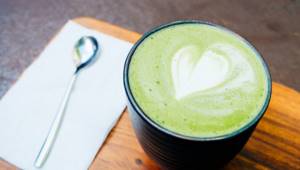
Matcha tea is beneficial for everyone, but especially for women. If you have no contraindications to the use of this product, then it should definitely be in your daily diet. And that's why.
- Protects against premature aging: This green powder is rich in antioxidants that protect your cells from mutation and the harmful effects of free radicals, and your body from premature aging. Thanks to the same antioxidants, matcha serves as a preventative against cancer.
- Helps you lose weight: Matcha contains catechins, which promote fat oxidation, speeding up metabolism and reducing the level of “bad” cholesterol in the blood. In this simple way, you can drink matcha tea and lose weight or maintain a slim figure. In addition, it reduces sugar levels in the body and gives a feeling of fullness, so matcha is an ideal product for evening tea. Unlike green tea, it contains much less caffeine, so you can sleep normally after drinking it. But still, you should not drink it 3-4 hours before bedtime.
- Helps fight hormonal acne: Eastern research shows that matcha tea contains substances that help balance hormonal levels. In particular, it normalizes the levels of androgen and testosterone hormones, the “male” hormones that are responsible for the appearance of pimples and acne in women. They cause our sebaceous glands to produce more sebum, which causes skin cells to die faster, clogging pores. This is how acne forms. If you often have acne in the jaw and chin area, it's hormonal. Especially painful cystic acne (white acne with a hard core that “sits” deep inside, and not like regular acne - closer to the surface) occurs during the cycle. Many dermatologists in Asia recommend that girls with such symptoms drink matcha tea every evening. Matcha helps lower the level of “male” hormones. But this cannot be the only solution for advanced hormonal acne. Here you should consult a doctor who will prescribe you treatment in order to bring your hormones back to normal.
- Strengthens concentration: matcha tea helps not only the body stay in good shape, but also the brain. It promotes concentration and improves brain activity and memory.
- Makes you happy: This green powder contains many amino acids, one of which is L-theanine. It promotes the production of serotonin and dopamine, which improve mood and help relieve stress.
A word from a nutritionist: is matcha latte really healthy?
Contraindications for using matcha
Matcha tea is very useful and the main contraindication to its use can only be individual intolerance.
It's also worth noting that matcha, which was grown in China, has a high concentration of lead. This element has a very bad effect on health, so you should not buy tea from this region of Asia at all.
Why then is all the tea imported from China not harmful? It's all about the leaves. In China, the level of lead in the air is catastrophically high, and tea leaves absorb it like sponges. When you brew regular loose-leaf tea from China, most of the lead remains in the leaves, but practically none gets into the water. With matcha, everything is more complicated, since this type of tea is ground into flour. As a result, you drink the leaves themselves, and with them the lead.
There is only one way out - watch the country of origin.
And also, as with any useful product, you should know when to stop. Don't drink more than a cup or two a day, otherwise the effect will be exactly the opposite.
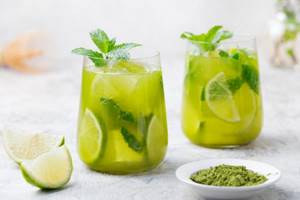
How to choose matcha tea and where to buy
As we have already said, China is no longer needed. He may be a transporter, but not a producer. Since this is a Japanese drink, it is most logical to buy matcha from Japanese manufacturers, since the quality of the product is very high, this is strictly monitored by their internal regulatory services. You can also find high-quality tea in Korea. But it will be slightly different in taste and color from the Japanese one. This is due to different climatic conditions, and also because in Japan matcha plantations are artificially shaded with rice straw. In addition, the Japanese often fertilize the bushes with nitrogen (the fourth essential element for the life of any organism after oxygen, hydrogen and carbon), this makes the color of the tea more saturated. But that doesn't mean Korean matcha tea is wrong. It's completely organic. So, if you choose between producing countries, then only among Korea and Japan.
In our country, you can buy matcha tea in eco-shops, on organic product websites, as well as on global websites like iHerb.
Natural matcha tea is produced in the form of a very finely ground bright green powder. When purchasing, pay attention not only to the color of the powder and the country of origin, but also to the production date.
And remember: an organic product that is brought to us from Asia cannot be cheap. The standard price around the world is about $10 for 40-50 g. So, if you see a 100-gram package for 50 hryvnia, then you shouldn’t buy it.
The only ice cream that does not harm your figure: top 5 recipes
How to brew matcha tea
There are many ways to brew matcha tea, from lattes to frappe to tea itself. This green slurry looks very appetizing and tastes good. If you need recipes, scroll further.
What you will need for all matcha brewing recipes:
- Chasen - a bamboo whisk for whisking matcha tea
- Chasaku - wooden measuring spoon
- Matcha is produced in the form of a bright green powder.
Matcha tea recipe
In a preheated cup, pour one chaska (half a teaspoon) of matcha with 50 ml of moderately hot water. Beat the mixture with a whisk until foamy. That's it, the matcha tea is ready.
If you are drinking matcha for the first time, try sipping a little, if desired, you can add more water and whisk again. Calorie content of 100 ml of matcha tea is 9 kcal.
Matcha latte recipe
Warm up a cup and then add 2 hours of matcha powder (1 tsp) into it. Pour 100 ml of hot water (no more than 85 degrees) into the tea. Whisk the green slurry with a whisk until the foam is not too thick. Heat 50 ml of milk, but do not boil. Use a cappuccino maker to froth the milk. If you don’t have it, take the cream and beat it with a whisk until foamy. The calorie content of such a drink per cup (100 ml) is only 25-35 kcal, depending on the fat content of the milk.
By the way, not only drinks are prepared from matcha powder. It can be added to desserts, smoothies, cereals, juices, ice cream and even soup. So, go for research!
Reviews
Yuri N.: “I love teas, I don’t refuse new varieties, but matcha tea gave me unpleasant associations at first - as if vegetable juice from parsley and celery had been poured into a cup. I tried it anyway – the effect exceeded all expectations, the taste was magical, incomparable.”
Tatyana R.: “I collect recipes for weight loss. I have problems that no diet can truly solve. I read reviews from people losing weight about matcha tea, not all of them were positive, but I decided to try it. I drink this tea every day, it’s too early to talk about great success, but the fact that I have stopped gaining weight is a fact.”
Galina V.: “Matcha will give any green tea a hundred points ahead. I'm ready to drink it from morning to evening. But in the evening, alas, it’s not possible - the drink is invigorating, and I can’t sleep after it. Maybe it affects someone differently.”
Weight Loss Tips
- Watch what you eat - avoid junk and processed foods.
- Consume five different vegetables every day.
- Consume three types of fruits every day.
- Drink at least 3 liters of water per day.
- Control your portions, even with vegetables and fruits.
- Add protein to every meal.
- Consume whole milk.
- Add healthy fats to your diet.
- Do a combination of cardio, HIIT and strength training.
- Drink a protein drink if you don't get enough protein from whole foods.
- Sleep 7 hours every night.
- Avoid late night snacks.
- Enjoy a cheat day every week (only if you've earned it).
- Walk and ride a bike.
- Try not to feel stressed. Practice yoga and meditation.
This brings us to the end. We hope you have received all the information about matcha tea for weight loss. Get your matcha powder package today and let us know if your weight loss plan worked! Enjoy a very tasty drink and lose stubborn fat. Hooray!

